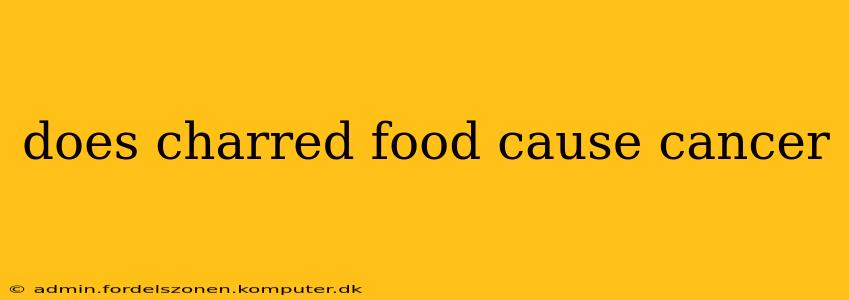Does Charred Food Cause Cancer? Unpacking the Truth About Carcinogens in Cooked Food
The question of whether charred food causes cancer is a complex one, frequently sparking concern among health-conscious individuals. While it's not a simple yes or no answer, understanding the science behind the potential link is crucial. This article will delve into the issue, addressing common concerns and providing a balanced perspective on the risks associated with consuming heavily charred food.
What Happens When Food Is Charred?
When food is cooked at high temperatures, particularly through grilling, broiling, or pan-frying, a process called the Maillard reaction occurs. This reaction is responsible for the delicious browning and flavor development we often associate with grilled meats and vegetables. However, alongside these desirable changes, the high heat can also lead to the formation of harmful compounds, including heterocyclic amines (HCAs) and polycyclic aromatic hydrocarbons (PAHs).
HCAs are formed when amino acids and creatine (found in muscle meat) react at high temperatures. PAHs are produced when fat and juices from the meat drip onto the flames or hot coals, creating smoke that then deposits back onto the food. Both HCAs and PAHs are classified as potential carcinogens, meaning they have been linked to an increased risk of cancer in animal studies.
Does this mean all charred food is cancerous?
No. The levels of HCAs and PAHs formed during cooking vary depending on several factors. The type of food, cooking method, cooking time, and temperature all play a role. While animal studies have shown a link between high consumption of HCAs and PAHs and cancer, human studies have yielded less conclusive results. It's crucial to remember that correlation doesn't equal causation. Many factors contribute to cancer development, including genetics, lifestyle, and overall diet.
What are the specific cancer risks associated with charred food?
Some studies suggest a link between high consumption of charred meats and an increased risk of certain cancers, particularly colorectal cancer, as well as stomach and pancreatic cancers. It's important to note that these studies often focus on individuals who consume large amounts of well-done or heavily charred meat regularly, not occasional consumption of slightly browned food.
How can I reduce my risk of exposure to HCAs and PAHs?
Fortunately, there are several ways to minimize your exposure to these potential carcinogens:
- Trim visible fat: Before cooking, trim excess fat from meats to reduce dripping and PAH formation.
- Marinate meats: Marinades can help reduce HCA formation.
- Avoid charring: Cook meats to an internal temperature that is safe to eat, but try to avoid excessive charring or burning.
- Don't burn your food: Discard blackened or burnt parts of food.
- Use lower temperatures and longer cooking times: This can reduce the formation of HCAs and PAHs.
- Flip foods frequently: This helps ensure even cooking and reduces charring.
- Choose healthier cooking methods: Opt for methods like baking, poaching, stewing, or microwaving.
Are there specific foods that are more likely to produce HCAs and PAHs?
Red and processed meats tend to produce higher levels of HCAs during cooking than other types of food. However, other foods can also produce these compounds when cooked at high temperatures. Highly charred vegetables, for example, can also contain HCAs and PAHs, although generally at lower levels.
Conclusion:
While charred food contains potential carcinogens, the risk to your health depends on multiple factors. Moderation, careful cooking techniques, and a balanced diet can help minimize any potential risks. Focusing on a variety of healthy foods and incorporating these cooking tips will allow you to enjoy occasional grilled or browned foods without excessive worry. This information is for educational purposes and should not be considered medical advice. If you have specific concerns, consult with a healthcare professional or registered dietitian.
